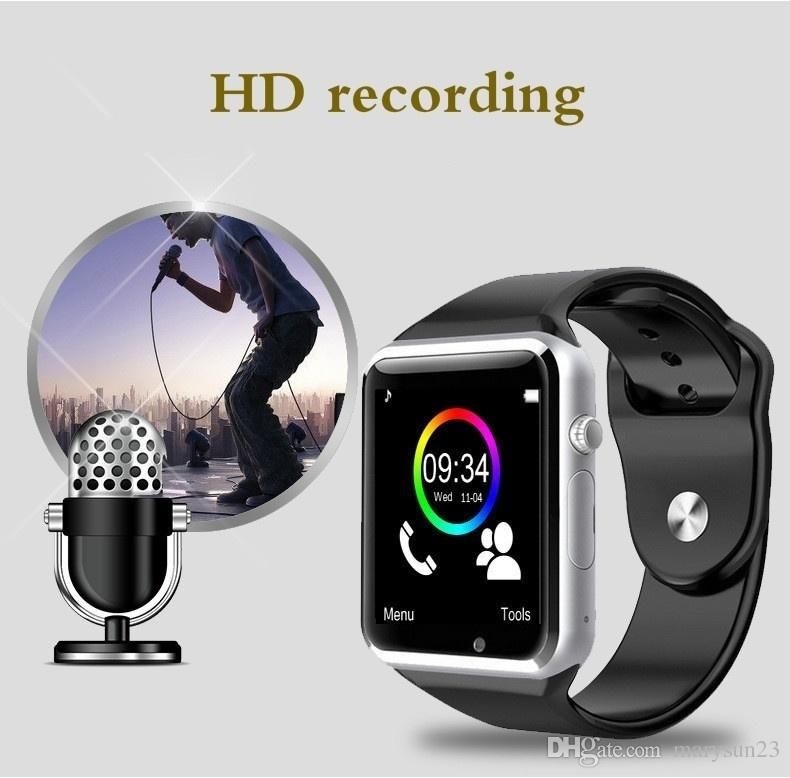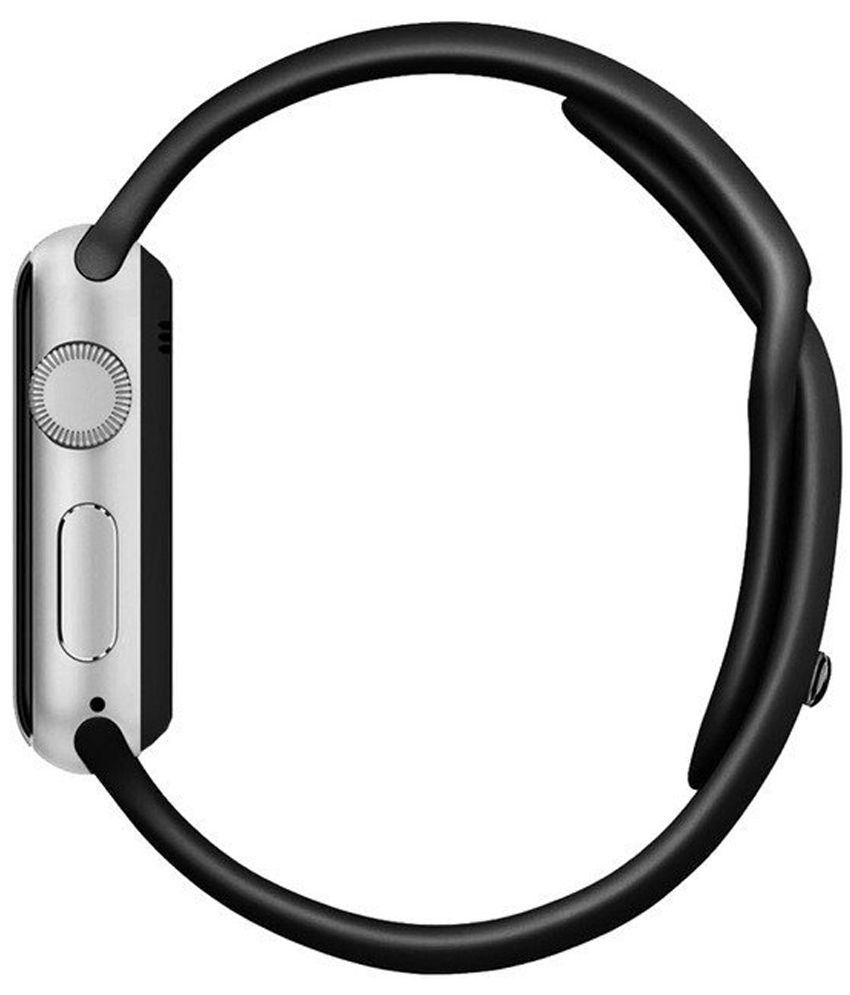
From just showing what the time is, making you
look much professional, online services, etc. to bigger features that’s more
like a laptop or smartphone. The Apple Smart-Watch offers much more than anyone
can imagine.
It’s the best-selling Smart-Watch, but that’s not saying much.
Apple (AAPL) won’t even reveal how many people have
bought them. That’s a strange behavior, in Apple’s playbook.
If you ask someone whose
wrist is not graced by an Apple Watch—and that’s most people—why they haven’t
taken the plunge, they usually offer one of two responses.
First, there’s the
battery life. Good heavens: 18 hours! This is a watch you have to take off and
charge every night, as though it’s a phone or a laptop. It’s like having to
charge your shoelaces every night, or your hat.
Second, there’s the Why.
Why do you need a Smart-watch? Is it such a burden to glance at your phone to
see your text messages? Where’s the killer app?
Apple has had 18
months to ponder these challenges—and now, at last, we can see the fruits of
its efforts. Welcome to the Apple Watch Series 2
The Apple Watch Series 2 looks identical to the original—except for its 1mm of added thickness.
It costs $370 to $1500,
depending on the materials you want for the case and the band. The actual electronics—the
features—are identical across all those models. (Except for the Nike
model. It adds two new watch faces and a plastic band with little holes in it.
Somebody pinch me.)
So: Has Apple addressed
the battery life? Has it addressed the Why?
Nope.
What’s new in Series 2
Physically, the new watch
looks identical to the first one. It’s no slimmer. In fact, it’s a millimeter
thicker than the original, which was no wafer to begin with.

To
charge the Watch—which you’ll have to do daily—you remove it and attach this
magnetic USB cable to it.
As before, part of the
fun is picking out the watchband you want, out of the dozens of colors,
materials, and clasp mechanisms. They attach and detach easily.

The
Apple Watch offers a dizzying assortment of bands in different materials and
colors.
As before, an Apple Watch
is worthless unless you also own an iPhone. It’s an accessory to the iPhone.
For a crash course in what the Apple Watch is and does, I recommend my review of the original, here.
What’s new, though, are these features:
·
Waterproof. We’re talking
really waterproof. It’s fine to swim with it, shower, even scuba dive, down to
164 feet. The activity tracker can now count your laps and your strokes, just
as it tracks your steps on land. Everybody’s favorite feature: When you get out
of the water, the Watch ejects water from its tiny speaker hole by playing a
few long beeps.
As
Apple’s promotional photo shows, the Apple Watch looks especially good when
you’re swimming in a totally transparent swimming pool.
·
Faster. You spend
less time waiting for apps to open.
·
Brighter. The screen
doesn’t bleach out in sunlight. It’s really, really bright—twice as bright.
·
Built-in GPS. Now you can run, walk, or bike without having to
bring your phone. When you get back, you get to see your distance and route on
a map. The fine print, though, is that GPS (on any device) guzzles battery
power like a thirsty man in the desert. The watch’s 18-hour battery life drops
to five hours
with the GPS on. No, you won’t routinely run for 5 hours at a time, but beware:
Whenever you are running, you’re burning through
your battery at 4X the usual rate.

Now
there’s GPS right on the watch (in this case, the special edition Nike watch).
At least the Watch has
begun to develop a more focused mission: to be more of a fitness watch.
It’s always had a
built-in heart-rate monitor. It’s not continuous, though; it samples your pulse
only once every 10 minutes, unlike fitness bands from Fitbit (FIT), Garmin (GRMN), and others. The
Apple Watch measures your pulse continuously only when you’re working out.
As always, it does a
great job at tracking your steps and runs and workouts, and sharing its data
with popular fitness apps.
(It’s never been much
good at tracking your sleep, given that it’s generally on your nightstand
charging at night.)
What’s new in Watch-OS 3
Ah, yes: watchOS 3, the software
that runs the Watch. This is good stuff. Especially good if you have the original Apple Watch, since you can install the
new software onto it.
(Incidentally, if you
don’t need the waterproofing and GPS, you can still buy that older watch for
$100 less: $270. It’s even got the faster chip in it now.)
Here’s what you have to look forward to:
·
I don’t know if someone at Apple read my critique of the nonsensical navigation of the original
watchOS. But in any case, the new watchOS straightens things out a
lot. The side button no longer opens a useless screen of people to text or
call. Instead, it offers a Dock: your most often-used apps. And you can swipe
up from the bottom to get the Control Center—frequently changed settings.

Just as
on the iPhone, there’s now a Dock and a Control Center on your watch.
·
There are more watch faces, and you can switch among them just
by swiping horizontally across the watch’s glass. (There used to be a setup
step first.) There’s now a Minnie Mouse watch face, not just Mickey (gender
equality at last!). Another new face shows your activity progress on the same
screen as the time. And a third new face called Numerals makes the hour follow
the hands around the face.

The
Apple Watch OS now offers a dizzying number of faces.
·
A new Breathe app guides you through (and, in fact, reminds you
to do each day) a deep-breathing exercise—a trick to calming down that really
works. It’s not, alas, timed to yourbreathing, the way the
equivalent feature on the Fitbit Charge 2 is.
The
Watch prompts you to chill out with a breathing exercise every day.
·
You can now share your physical activity graph (or heart rate)
with family or friends—fitness through humiliation. Or shoot messages to each
other, either written or spoken.
·
There’s fitness tracking for wheelchair users—a first.
·
You can label your workouts after you’ve completed them.
·
Much faster app launching. (Frequently opened apps are kept in
memory.)
·
Swipe up from the bottom of the watch face to open the Control
Center, a panel of important settings.
·
Reply options now appear on the same screen as incoming text
messages. And one of them is Scribble, which is handwriting (well, fingertip)
recognition. You can reply to a text message by writing on the watch face,
letter by letter. That’s surprisingly useful.
·
There are new apps for Reminders and Find My Friends.
·
A new feature called SOS works like this: In an emergency, you
can hold down the Side button to call 911 (after a three-second countdown), or
whatever the local country’s equivalent number is. Then it notifies your
emergency contacts, complete with a map of your location. Then the watch
displays your medical ID.
Automatic login
Finally, watchOS offers
the closest thing yet to what could be called a killer app: It can unlock your
Mac just by being nearby. That is, when you wake your Mac, the usual password
screen doesn’t appear—instead, the watch acts like a wireless master key. (For
security, it has a very short range—a few feet.)
Once you’ve turned this
feature on, just waking your Mac—raising the laptop lid, for example—logs you
in, instantly and securely. In place of the usual password box on your Mac’s
screen, it says “Unlocking with Apple Watch.” And your watch says “Mac
Unlocked.” And you’re in.
Security
+ convenience is a rare luxury—but that’s what Automatic Login brings you.
The requirements: The Mac
has to be a 2013 or later model, running macOS Sierra. Watch and Mac must be
associated with the same iCloud account. Watch and Mac must both be
passcode-protected.
And—here’s the eyebrow-raising
part—you must have two-factor authentication turned on. That’s Apple’s new security system for logging
into things. (And no, smartypants. Two-factor authentication is not
the same thing as last year’s two-step
verification. Although
they do have one thing in common: They both have terrible names.)
Unfortunately, Apple
doesn’t let just anybody turn this feature on. They’re rolling it out slowly to
a few people at a time. You’re supposed to turn it on in System
Preferences-> Cloud-> Security -> Account Details, but you may just
get a message that says something like, “Two-factor authentication is not
available for your iCloud account.”
But once you do turn it on—hoo, boy. That is
the ultimate. High security, no inconvenience. Nicely done.
Watch the watch
Let’s be clear: There are
people who love their Apple Watches. They’re
proud of their Apple Watches. They give it very high marks for satisfaction. So
there’s that.
But this watch is still overloaded.
It’s still got way too
many features. It’s still unfocused. It has, if you can believe
it, 90 screens full of settings on the iPhone. For everything from
vibration strength, to Buddhist calendars, to how you want your city
abbreviated on the Weather screen, to something called Use Previous Duration
(“When this is on, every new Breathe session will default to the duration of
your previously completed session”).
That’s right, 90 screens. I counted.



No comments:
Post a Comment